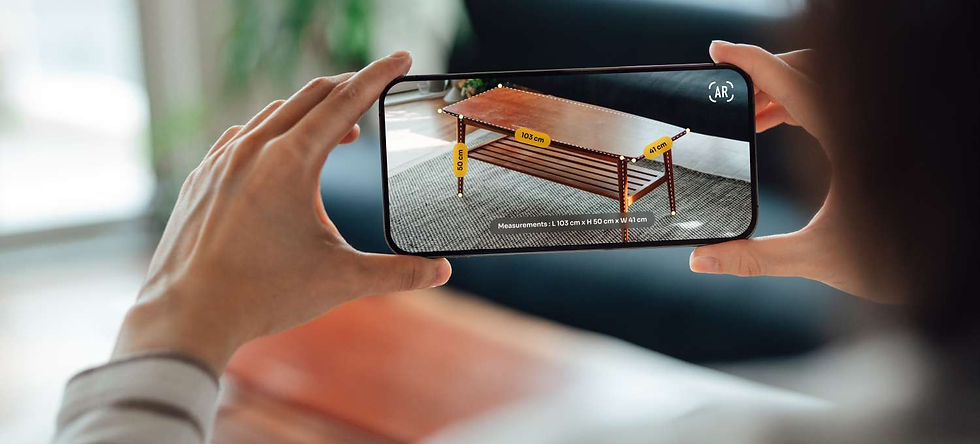Is AR the Future of Consumer Electronics?
- J1 Lee
- Jun 22, 2023
- 2 min read
Updated: Jun 22, 2024
Augmented Reality (AR) was introduced in 1968 in the form of The Sword of Damocles, a headset with glasses akin to modern virtual reality that was worn to visualize a 3D image of The Sword of Damocles inspired by the Greek myth. While the technology was bulky, awkward, and basic, it marked the beginning of augmented reality. AR was explored for the next two decades as the necessary technology had not been developed; however, aerospace industries and businesses started adapting augmented reality during the early 90’s. For example, Boeing built the first full augmented reality system called Virtual Fixture comprising of a headset and exoskeleton used to track the user’s movement.
Since then, AR was not really adapted or experimented with outside of aerospace; however, when the mobile phone was popularized in the late 2000’s, many small companies ventured into the realm by launching apps that were able to bring overlays on the phone’s camera and inform the user. For example, Argon, a browser for AR, overlayed 3D images. Google was the first large company to delve into AR in 2011 with the release of the Google Glass, which proved to be a notable failure. The technology that the glasses were equipped with was revolutionary, but impractical and expensive. At a hefty price of $1500 per pair, it overlaid a user interface comprised of the weather, messages, and videos on the glasses that only the user could see. It had similar capabilities of a smartphone but compromised on speed and integral features such as calling.
Despite Google Glass’ commercial failure, it was regarded as being innovative by many technology enthusiasts as it was novel and it led to AR bring heavily experimented with by other major companies. In 2017, for example, Apple released ARKit, allowing developers to integrate AR into their apps easily. AR was a trending topic in the tech world; however, there was no practical implementation of the idea in a product that made AR a desirable feature.
In 2023, over ten years after the release of the Google Glass, Apple released their own AR device, the Apple Vision Pro. Similar to the Google Glass, the Vision Pro will be sold at a hefty price of $3500 and will be available in early 2024. Unlike the Google Glass, however, the Vision Pro is set to have more practical features including the ability to FaceTime, extending the display of Apple devices through AR, and the ability to completely wrap any environment into almost perfect workspaces with several monitors and well-placed user interface. It also has fascinating new features such as being able to take 3D photos that can be relived in through the device.
Although many may not be able to afford the Vision Pro at release, the Vision Pro shows the potential and practicality of AR when used properly. As technology improves, AR will become cheaper and more accessible and other companies may also enter the market. The Apple Vision Pro is a notable indication that AR devices will become a greater part of the consumer electronics market.
.jpeg)

Comments